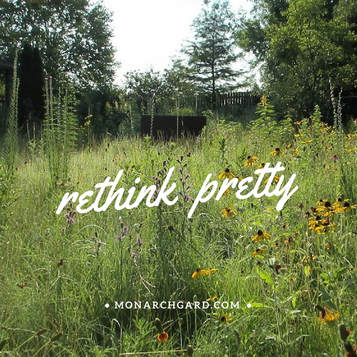Sheet Mulching
Basically you beg friends and neighbors for as much cardboard as you can and place it over lawn or other plants you want smothered. This is followed by a good watering to soak the cardboard well, then perhaps a layer of soil or compost -- several inches or more. Some will also top this with a few inches of wood mulch or just use mulch. The goal here is to create a plantable area without having to remove current vegetation. But what's wrong here? It limits air and water transfer between the soil (its organisms and any tree / shrub roots which need to breathe). Read more at this link, or if you like termites, this one. And what if you have thousands of square feet to convert? That's a lot of cardboard.
Solarization
In this method you're putting either black or clear plastic over an area, secured around the edges by bricks or stones, and baking the plants to death that you don't want. Usually you'll solarize over a few months in summer when it's the hottest out. But solarization doesn't just bake plants -- it bakes the soil, in effect sterilizing it. Or more to the point, killing organisms in the soil you probably want. Usually this method is used to kill soil pathogens and pests that growers and those in agriculture don't want -- so why would you use it in your garden if what you want is to promote healthy soil? And promoting healthy soil is good gardening 101. One final point, what do you do with all of that plastic trash? Talk about an environmental dilemma.
What else could you do? Read on.
If you've got lawn nothing beats renting a sodcutter. If you can't manage this machine bribe your beefy neighbor. What's wonderful is you get a clean, relatively smooth, ready-to-go surface in one morning. And the rolled up sod makes stupendous compost -- just the best black gold. What's not so wonderful is the exhaust from the machine and the gas you've used.
You'll Hate Me For This
The ends can often justify the means. As much as we vilify glyphosate (rightly so given how much of our nation's ag fields are doused in cancer-causing toxins), this is a fantastic, cheap grass and weed killer that with the right formulation targets only foliage. You may only need one application and the ground is safe to plant after 3-4 days (I've done it). If you're still reading and you go this route, follow the directions. Spray in the late evening in calm wind when the temperature is right. READ THE DIRECTIONS. The dead grass makes a nice mulch to plant into, as well. This method is probably best for a large area. If you want to seed in spring, rake away the dead grass for a fairly clean surface, otherwise a late fall and winter seeding is best right into the dead grass.
Direct Planting Into Lawn
If you've got a patchy lawn area, and / or one you seldom if ever water and fertilize, you already may have a great garden bed. In spring when the grass is actively growing scalp it. Two weeks later when it's recovering scalp it again. Stress it hard. Suck those nutrients and energy out of the roots it was using to put on new growth. Then dethatch the lawn well with a hand or power rake. Go ahead and rip grass roots out of the soil as during this process you are creating places for planting and seed germination. Sow seeds if you're going for a wild meadow look, combine seeding with planting potted material to ease your budget, or go just with potted plants / plugs (making sure to plant on 8-12" centers to compete against the lawn). I might suggest sowing an aggressive native species like Rudbeckia hirta or Ratbida columnifera, as these plants do a stellar job shading out various lawn grasses and, by the end of year two, have petered out extensively since they work more on a biennial schedule. Then you can go back in and garden or plant some more as you design and tweak the space.



 RSS Feed
RSS Feed

